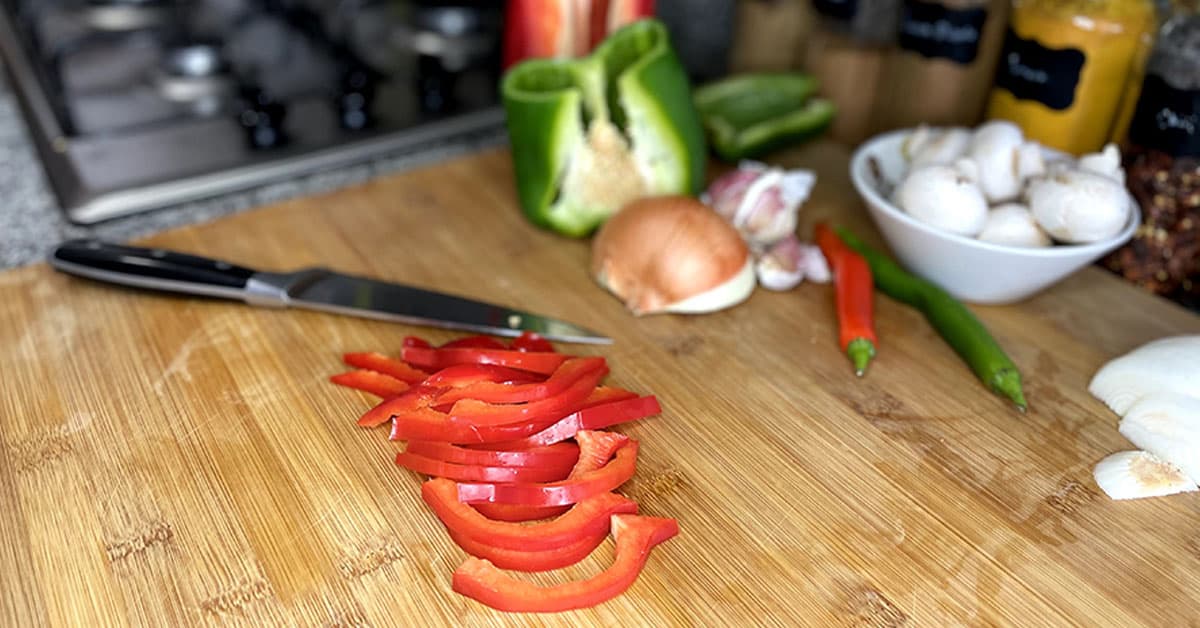The Helpful Chef Guide to Organizing Your Kitchen
A well-organized kitchen will let you cook more efficiently, helping you to find even more pleasure in your cooking. The initial decluttering might seem like a chore, but the benefits of a well-organized kitchen make it well worth the effort. You don’t need a massive kitchen to do this – in fact, it’s all about using the space you’ve already got as effectively as possible. This helpful guide will show you how to organize your kitchen to make the most of your space.
Clearing Out
To start your journey towards a well-organized kitchen, the first step is to go through what you’ve got and clear out anything unnecessary. Ask yourself the following questions: does it work? Do I use it? Do I love it? Then make yourself four piles: things to keep; things to donate; things to resell; and things to throw away.
Crockery
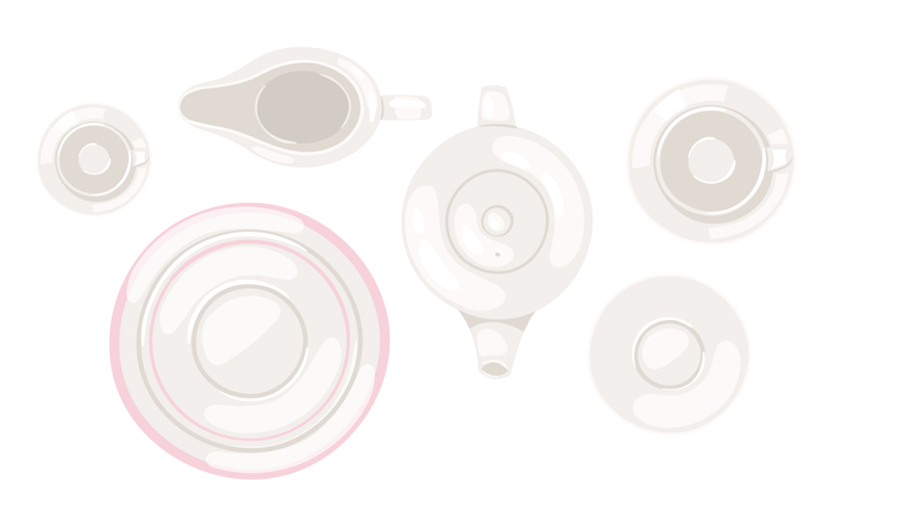
Let’s look at crockery first. Watch out for any chipped mugs, plates, or bowls. They don’t look good, and more importantly, chips are prone to harboring germs, so it might be worth discarding anything chipped or damaged.[1] It could also be time to get rid of any crockery you’re just not sure about.
At this stage, it’s also important to assess how much crockery you actually need. A larger family will need more plates than someone who lives alone, for example. You may also want to consider keeping more dinnerware if you have guests over regularly, too. Of course, it’s handy to have a few extras, but there’s no need to go overboard!
When disposing of crockery or glass, remember to wrap anything sharp in newspaper or a plastic bag. Unfortunately, you usually can’t recycle broken glass, so wrap it up carefully and put it in the bin.
Gadgets
The next step is to check your kitchen gadgets. Things you use daily or throughout the week can stay on the sides if you find them most useful there. For everything else, decide whether or not you actually use them. Anything unused can be ditched, and things you do use, but less often, can live in a cupboard or the pantry instead.
Cookware
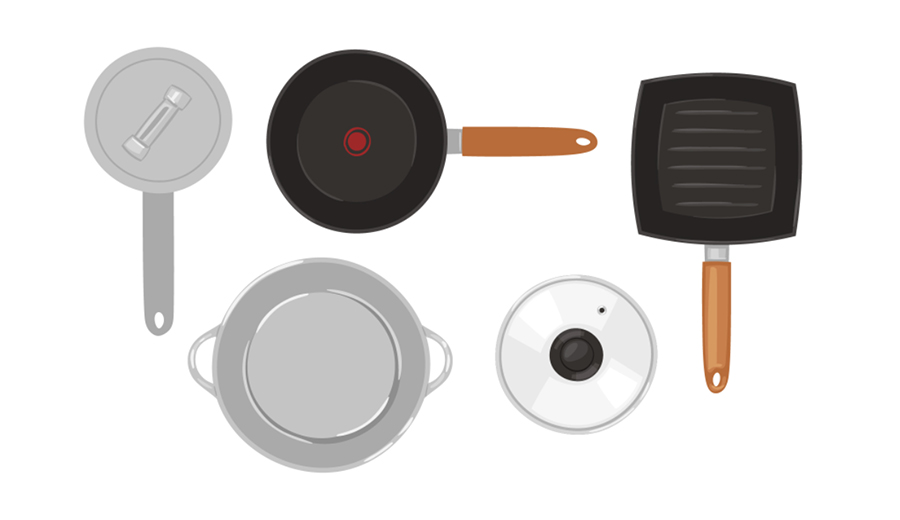
Next, go through all of your pots and pans. It’s not uncommon to have an item of cookware that you don’t enjoy using – perhaps it’s a baking tray that’s warped, a pot with a handle that gets extremely hot, or a frying pan that you’ve not cleaned properly for years. Get rid of it!
Another thing to look out for is duplicates. It’s so easy to find yourself with multiple variants of the same kitchen tool, but do you really need two peelers, three whisks, or four spatulas? Of course, sometimes it can be useful to have two of the same item – extra knives and chopping boards, if you often cook with a partner, for example – but if you know that you never use these doubles at the same time, keep your favorite, and ditch the other.
Accessories
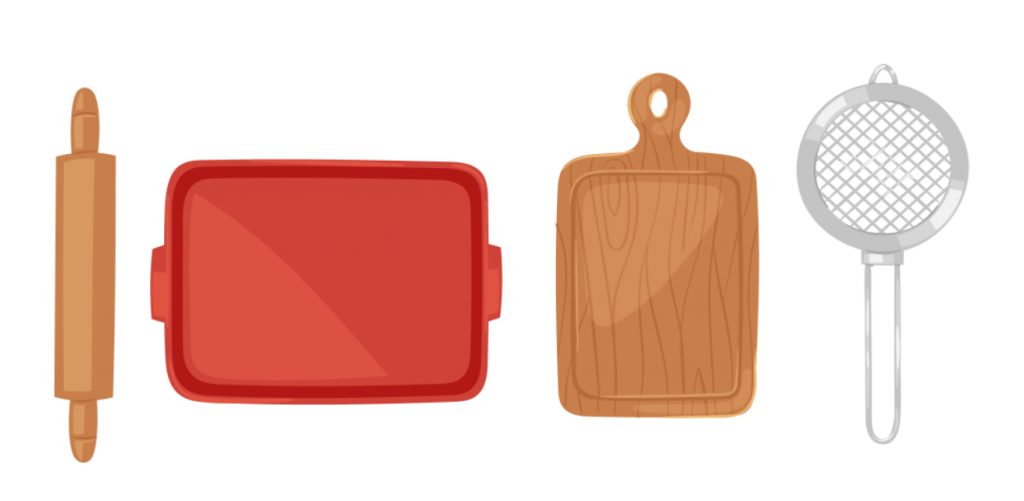
For kitchen accessories like Tupperware, make sure you can match up every container with a lid that fits it. Get rid of any lids with no containers and vice versa. Once they’re all matched, it’s usually easier to store them together, rather than stacking the container and piling all the lids on top. This will take up more space, but saves you having to match lids to containers every time!
Multi-purpose items
Now that you’ve gone through everything you use for cooking, it’s a good time to check your ‘keep’ pile and see if anything can be used for multiple kitchen jobs. For example, a serving bowl you never use could become a fruit bowl, or a colander could double as a veg steamer. Now go back through the pile and get rid of anything made redundant by this multi-purpose approach!
Long-lasting food
Finally, go through all your long-lasting food. The first thing to do is check the use-by dates and chuck out anything that’s expired or isn’t fresh. Spices can lose their flavor quickly, so anything you’ve had for a while might need to go as well. Then, consolidate any duplicates you might find – bags of dried fruit, flour, or anything else you can combine.
Once you’re all sorted, your ‘keep’ pile might look something like this:
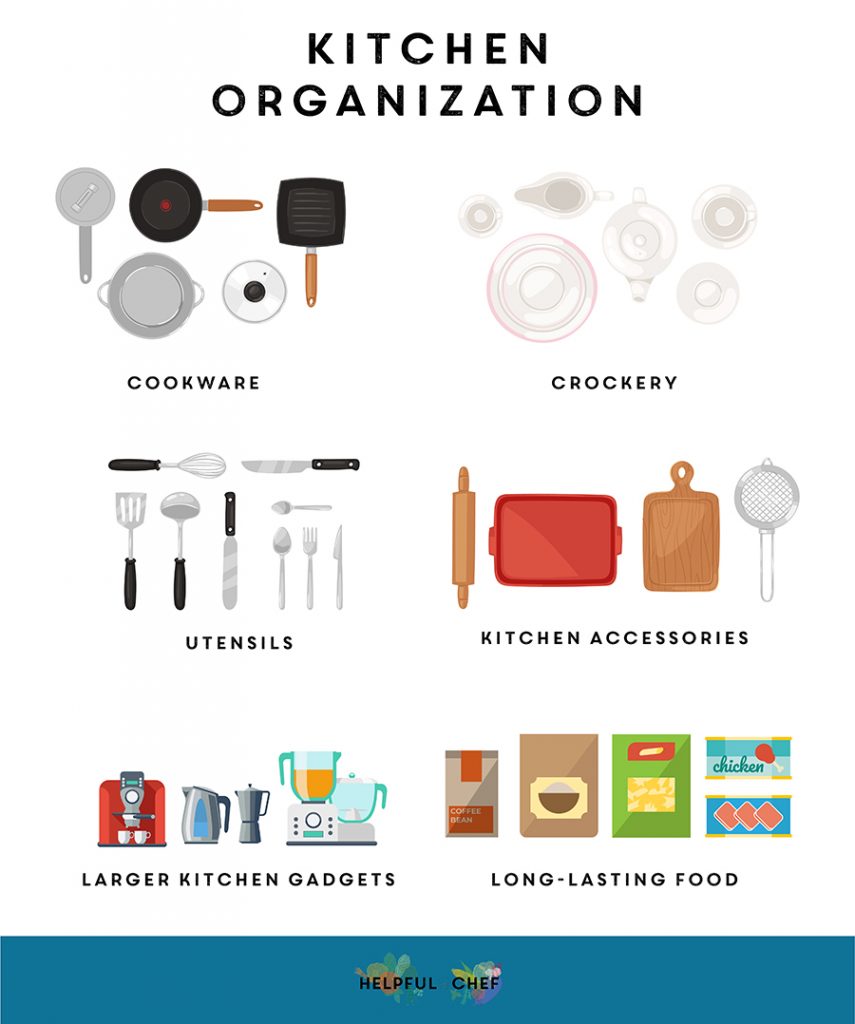
If there’s anything personal to your kitchen that we haven’t covered – such as an extra pantry, a cupboard just for cookbooks, or anything else – clear that out as well. By this point you should be really good at deciding what you do and don’t need!
Cleaning Up
If you’ve made it this far, your kitchen might be looking more cluttered than ever, with piles of kitchenware all over the place. All your drawers and cupboards should be empty – making this the perfect opportunity for a deep clean of all your drawers and cupboards. This might not sound like fun, but it’s easier to do it right now than to have to get everything out all over again! Just wipe all your shelves, cupboards and drawers with soapy water or kitchen cleaner, and dry off or leave open to air dry. You’ll be done before you know it!
Deciding on a layout
Now it’s time to give everything in your kitchen a home, whether it’s where they came from or somewhere new. We recommend the French method of kitchen organization: this involves keeping common tools and ingredients out in the open, near where they’d be used in your kitchen. This method was used by celebrity chef and author Julia Child to keep her kitchen organized and functional, and it can be applied to any kitchen.[2]
What’s crucial to this method is the central idea that every kitchen item should have its own home location where it stays or gets returned to after use. For example, you could store your garlic press with your garlic, or your pestle and mortar near your spices. Rather than tucking these items away in a cupboard or a drawer, they’re already where you’d use them! This doesn’t mean you don’t need to put everything out on the sides – instead, what we’re aiming for is a balance between making your kitchen easier to use while avoiding cluttered sides.
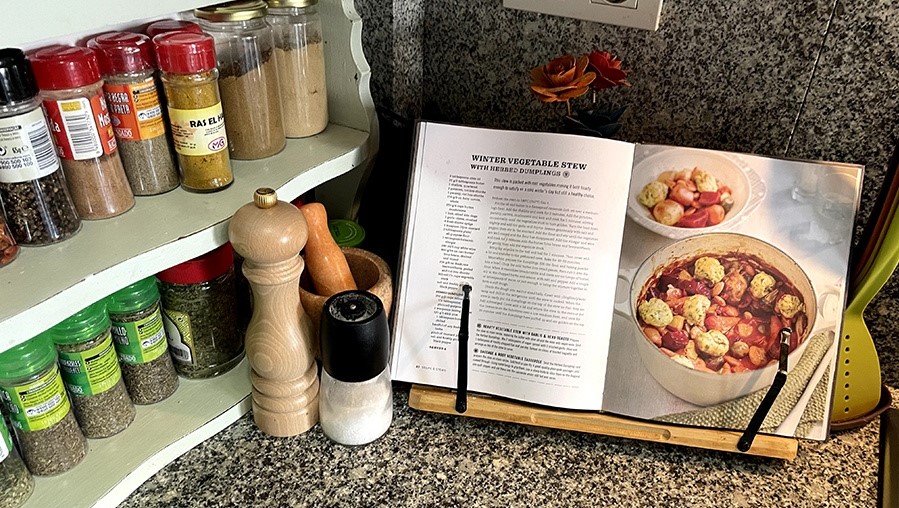
An effective way to employ the French method is to consider zoning your kitchen, which we’ll explain in this section. Zoning involves having a home for every item in your kitchen, which helps you give every area in your kitchen a purpose. We can do this really easily by breaking down the kitchen into specialized areas.
Everyday zone
This area should be somewhere easily accessible and close to the sink or dishwasher, so you can stack any dirty plates. In a perfect world, we’d all do our washing up straight away, but in reality, we can’t always do this. By having a zone for this kind of mess, you can minimize how much kitchen space it takes up. This space could also be used to store things you use daily, especially if your kitchen is on the smaller side.
Cooking zone
Your cooking zone should be close to the oven and have space for doing food prep like peeling and chopping veg or cutting meat. You might want to store pots and pans, measuring equipment, chopping boards, kitchen knives, or anything else you regularly use for cooking in this area, either in a cupboard, hanging up, or on the side tidily.
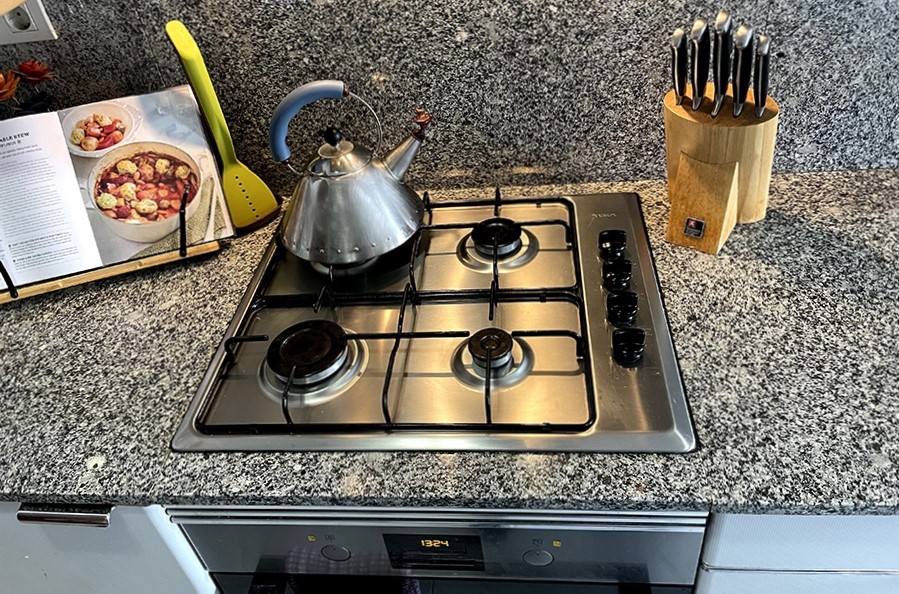
The pantry
If you’re lucky enough to have a pantry in your kitchen, we recommend you use this space for storing long-lasting food, spices, and kitchen gadgets that you aren’t using so often – perhaps your blender or standing mixer. If you don’t have a pantry in your kitchen, a dedicated cupboard or two can be used instead.
Accessories zone
It can be useful to keep kitchen accessories such as Tupperware, foil, or plastic wrap all in one place. Ideally this will be near the fridge, since most of these kitchen accessories are for keeping leftovers or packed lunches fresh.
Tea and coffee zone
Lots of people like to have their tea and coffee stored out by their kettle or coffee machine, and this makes a lot of sense if you’re using these items every day. But it doesn’t have to look cluttered or untidy. A set of stacking mugs can look classy over in this area, or a mug tree displaying some of your favorites. You could also make use of tea, coffee and sugar pots to reduce visual clutter.
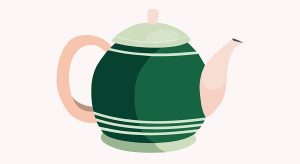
Bar area
Whether you’re a fan of whiskey, gin or vodka, a bar zone could be a handy place to store your drinks, glassware and mixing equipment. This won’t be useful for everyone, but if you think it would suit you, go ahead and make some space for this zone!
Under the sink
Save the space under your sink for cleaning supplies, washing up liquid, trash bags, and recycling. Anything else should have a home elsewhere.
Anything else
Any more kitchen spaces can be used for whatever you have left over. You could turn an empty corner into a space for hosting, or to store sentimental or particularly flashy crockery. But be careful to avoid just cluttering this space with junk!
Another way of looking at zoning is amore functional approach. You could have areas for consumables and non-consumables, a cleaning area, spaces for prep and cooking, a baking area if you enjoy baking, or a second prep zone if you often cook with someone else. It’s really up to you – just keep it neat and practical!
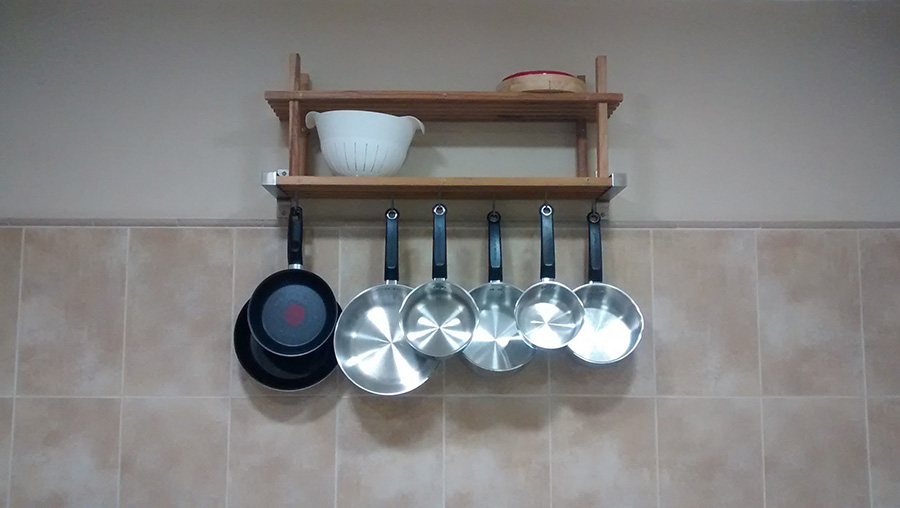
Considerations for children
If you often have children or grandchildren in your kitchen, be sure to organize your kitchen in a way that keeps dangerous items out of their reach. Any sharp, heavy, or otherwise dangerous items should be stored up high or hidden away. It could also be a good idea to hide any treats too, so the kids aren’t tempted to raid the cupboards!
Storing your food
Now that your kitchen is organized into useful zones, the next step is to learn how to store your food properly. Not only can this lead to a more organized kitchen, but it can also greatly lengthen how long your food will last, keeping it fresh for longer.
You can apply the zoning approach to your refrigerator and cupboards too. Having separate cupboards for baking, oils and spices, and versatile ingredients such as flour, for example, should help you avoid having to rummage through everything to find the ingredients you need. Just remember to avoid storing spices too close to the stove – instead, store somewhere dark and cool to preserve their flavor. The main thing to remember is to have a home for everything, and to return everything to its home after using it.
Refrigerator Organization
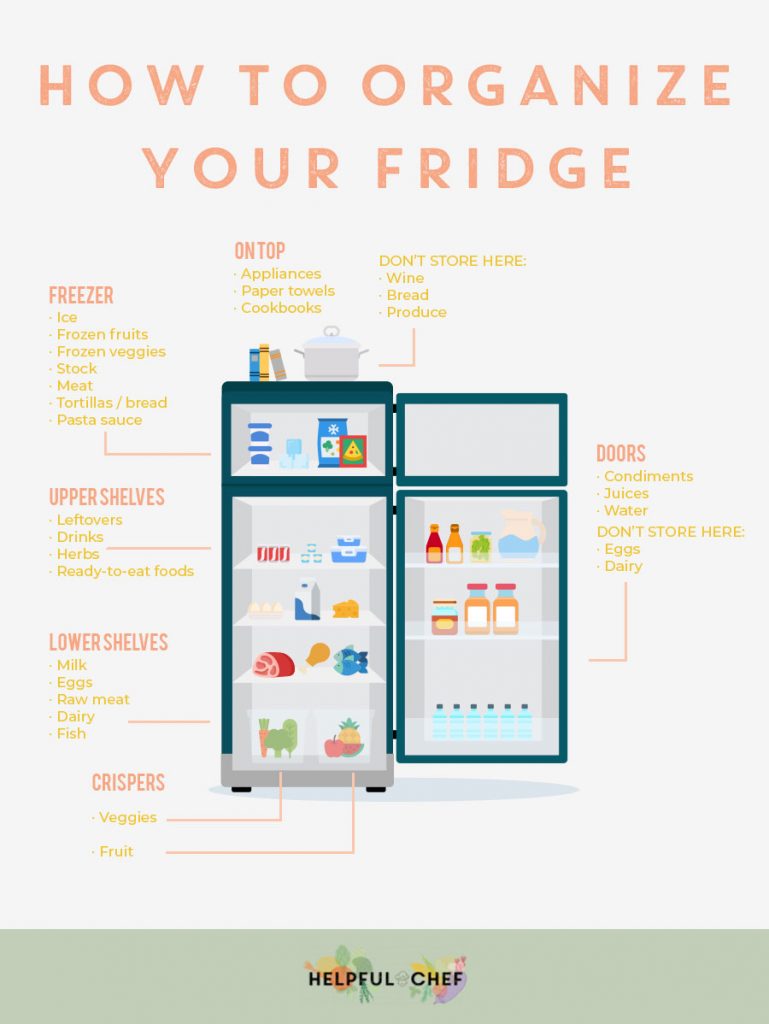
The first thing to consider might be zoning your refrigerator. How you do this is up to you, but there are some general guidelines to follow.
Upper Shelves

The upper shelves in your refrigerator have the most consistent temperature. This area is best for storing foods that don’t need cooking, like leftovers, drinks, deli meats, dips, and anything else that’s ready to eat straight away. You can also use this space to store berries if you’re out of space in the crisper drawers.
Lower Shelves

The refrigerator’s lower shelves are the coolest, making them the best place to store raw meat, eggs, seafood, and dairy. In order to prevent bacteria spreading from raw meat to other foods in your refrigerator, you should designate an area or shelf for just keeping raw meat. You should also keep raw meat in its packaging or covered in plastic wrap if it’s been opened.
One thing to remember for all your refrigerator shelves is to leave space for air flow. A crowded shelf will have inconsistent temperature and pockets of warmer air, which is no good for preserving your food.
Crispers

The crisper drawers at the bottom of the refrigerator are designed to preserve moist conditions, perfect for fruits and vegetables. You’re better off keeping fruits and veggies separate, as many fruits produce ethylene, which can cause vegetables and other fruits to ripen, which can turn vegetables limp or yellow.[3] Luckily, most crisper sections have two drawers, so you can have one drawer for each.
Doors
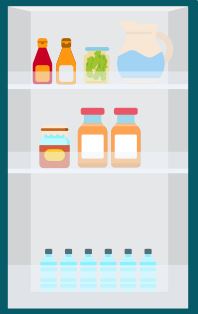
The doors are the warmest part of the refrigerator, especially if they’re being opened and closed all day. This means that you should reserve this space for things that can stand up to the heat, such as condiments and juices. Most things should be okay in the doors, but you’re better off not storing eggs or dairy products in the refrigerator doors, just in case.
Freezer

The freezer is for storing all your frozen fruits, vegetables, meats, stock, ready meals, ice, and anything else that needs frozen. You can also freeze lots of other food such as bread, doughs, sauces, stocks, and many other things – this can be especially useful if you like to cook batch meals to reheat over the week.
There are a number of things that shouldn’t be frozen. The United States Food and Drug Administration (FDA) say that you should never freeze the following: vacuum-packed salads; pre-stuffed meats; unopened canned ham; ready meals that have been cooked at the store; and eggs in their shell, which can crack.[4] If in doubt, it’s best to check the packaging, as always.
For your freezer to work properly, you need to keep it packed tightly, and ideally defrost it at least once a year. This will keep your food as fresh as possible and also make the most of the energy used to keep the freezer cold!
On Top

It’s also worth mentioning that the top of the refrigerator can be a useful area for storage too, especially if your kitchen is on the smaller size. However, keep in mind that the top of the refrigerator isn’t the best place to store food. For a refrigerator to work properly, the condenser coil inside pumps warm air out of the top. Warm air isn’t great for most foods, so try to avoid storing food in this space, and instead save it for appliances or cookbooks, or leave it empty.
What goes in the refrigerator?
To avoid your refrigerator getting cluttered, you should consider whether the food actually needs refrigerating in the first place. Onions, potatoes, and squash are best stored somewhere cool, dark and with low moisture, so they’re better off in a cupboard than in the refrigerator. Tomatoes can lose their flavor and turn soft and unpleasant in the refrigerator, so they’re best stored at room temperature, and can further ripen in the sun.
Many foods are happy to be stored in or out of the refrigerator. For example, avocados and lots of other fruits will be fine left out in a fruit bowl to ripen, or can go in the crisper if you want to slow the ripening process. If you’re storing fruit in a fruit bowl, be aware that leaving bananas (and some other fruits) next to other fruits can cause the other fruits to ripen. This can be a good thing or a bad thing depending on how ripe your fruit is already! Herbs can be kept in the refrigerator too, or stored on the side in a vase if you know you’ll be using them in the next few days.
Lots of other foods are also fine to store in the refrigerator or the cupboard. Nuts, nut flours, and nut butters are usually stored in a cupboard, but can be refrigerated to preserve their natural oils and keep them from separating. The same goes for oils such as canola, safflower or olive oil, which will last longer in the refrigerator as they’re low in saturated fats.
Cupboards
As well as filling your cupboards in a way that complements your kitchen zones, we recommend making use of see-through plastic or glass containers to store your long-lasting food. As well as keeping the food fresh, this has the added benefit of enabling you to quickly see how much you have left. It also looks far less cluttered than having a mess of opened and unopened packets of food. Well-fitting containers can also help you to make the most of your cupboard space. Just make sure any containers you buy are FDA approved – it should say so on the packaging.
You can also maximize your cupboards’ vertical space by making strategic use of racks to store items such as spices. Spices can then be organized alphabetically, by cuisine, or by how often you use them.
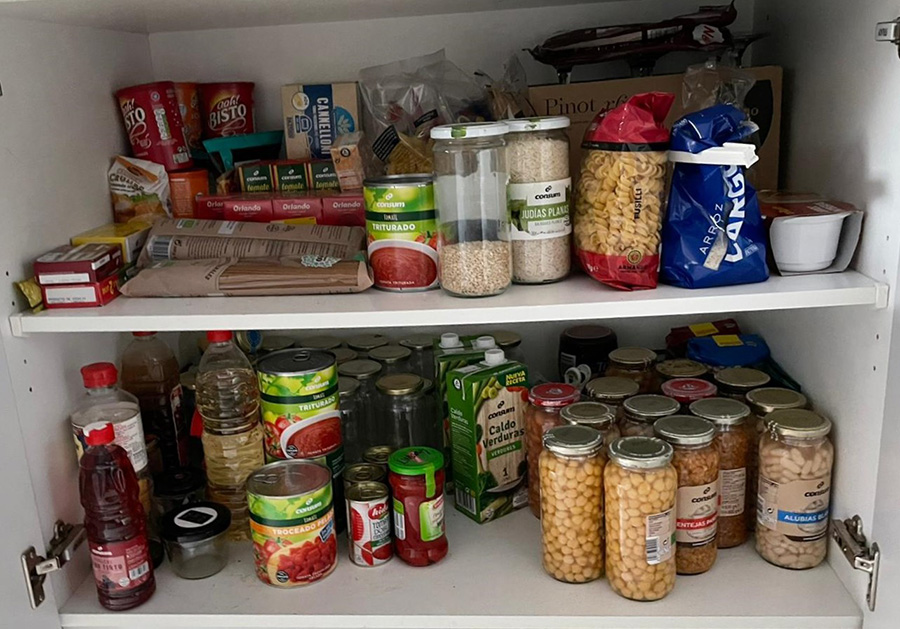
Consistency
At this point, your kitchen should be well organized and clutter-free. In this section, we’ll outline a few simple tips to keep on top of your kitchen organization going forward.
Shopping
Before a trip to the grocery store, try to take stock of what you’ve got in the cupboards, fridge and freezer. Look out for anything that needs using over the week, and try and find some recipes to use them in. If you’re running low on any long-lasting essentials like beans, lentils, specialty pasta, try to use these up too, and replace them if you need to.
To make this even easier, you could try to plan your meals for the whole week before you go for a shop. This will help you keep track of what you’ve got in your kitchen and can also reduce impulse buys when you’re at the grocery store, which will further reduce clutter in your kitchen. A list on your phone or a pen and paper list that you keep in your kitchen and add to over the week are both great options.
Kitchen Gadgets

It’s so easy to build up a collection of kitchen gadgets that do nothing except clutter your cupboards. In the future, try not to buy stuff you’ll never use. As celebrity chef and MasterChef Australia winner Adam Liaw says, ‘A good rule of thumb is that if it has an ingredient in the name, avoid it’ – try to keep this in mind when buying new gadgets for your kitchen.[5] There are of course some notable exceptions to Liaw’s rule, such as the garlic press or coffee machine, but most single-ingredient gadgets are ‘the impulse buys of the kitchen’. Be ruthless!
Tidying
Whether you like to tidy as you go or do a bigger, less frequent kitchen cleanup, it’s important to return everything to its home when tidying. This might be tricky at first, but you should be able to work out where everything goes by thinking about what zone it belongs in.
Clutter can gradually build up in any kitchen, so every now and then, check and make sure you aren’t unnecessarily cluttering your kitchen with stacks of papers, general bits and bobs, or even an out-of-control pile of washing up!
When you’re putting crockery away, try to remember to rotate the plates in the cupboard by putting clean ones at the bottom of the pile – this way, you ensure that everything gets used.
Summary
Congratulations on organizing your kitchen! The only thing left to do is evaluate how your new organisation system is working. Of course, you’re always free to change things and try out new layouts. Just remember to reflect every now and then to make sure everything is working for you.
Now that you’ve sorted out your indoor cooking space, what about cooking outdoors? Check out our Helpful Guide to Grills, Smokers, and BBQs.
FAQs
Q: How often should I reorganize my kitchen?
A: After organizing your kitchen for the first time, it can be confusing to remember where everything is at first. Give yourself some time to get familiar with the new layout, then feel free to make small changes with anything you’re still not sure about until you’ve found something that really works for you. After that, there’s no need to regularly reorganize your kitchen!
Q: I don’t want to have to decant my long-lasting food into containers, do I have to?
A: Not at all! The key to a well-organized kitchen is that it works for you, so if you don’t like the idea of uniform containers for long-lasting foods, don’t use them. However, we’d advise that you still try to keep similar foods together, and move older food to the front of your cupboards so you use it before anything new.
Q: What should I do with long-lasting food that I know I won’t eat?
A: If you’ve got long-lasting ingredients that you don’t think you’ll eat, it could be worth researching some recipes to see if anything takes your fancy before throwing it out. And any long-lasting food that you’re absolutely sure you won’t eat can be donated to a food bank instead.
References
1 Expand US Ceramics (date unknown) ‘Should You Throw Away Chipped Dishes?’ Retrieved from https://expandusceramics.com/qa/should-you-throw-away-chipped-dishes.html.
2 National Museum of American History, (November 2012) ‘Julia’s Kitchen by Design’. Retrieved from https://americanhistory.si.edu/food/julia-childs-kitchen/julias-kitchen-design?hootPostID=aef177e859576a4c3e45b928090c537f.
3 Grant, Amy, (31 May 2020) ‘What Is Ethylene Gas: Information on Ethylene Gas and Fruit Ripening?’. Retrieved from https://www.gardeningknowhow.com/edible/fruits/fegen/ethylene-gas-information.htm.
4 FDA, (March 2018) ‘Refrigerator & Freezer Storage Chart’. Retrieved from https://www.fda.gov/media/74435/download.
5 Liaw, Adam, (15 September 2020) ‘‘If it has an ingredient in the name, avoid it’: Adam Liaw on the kitchen appliances you’ll actually use’. Retrieved from https://www.theguardian.com/food/2020/sep/16/if-it-has-an-ingredient-in-the-name-avoid-it-adam-liaw-on-the-kitchen-appliances-youll-actually-use.
